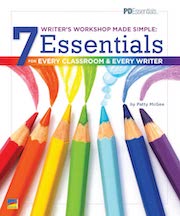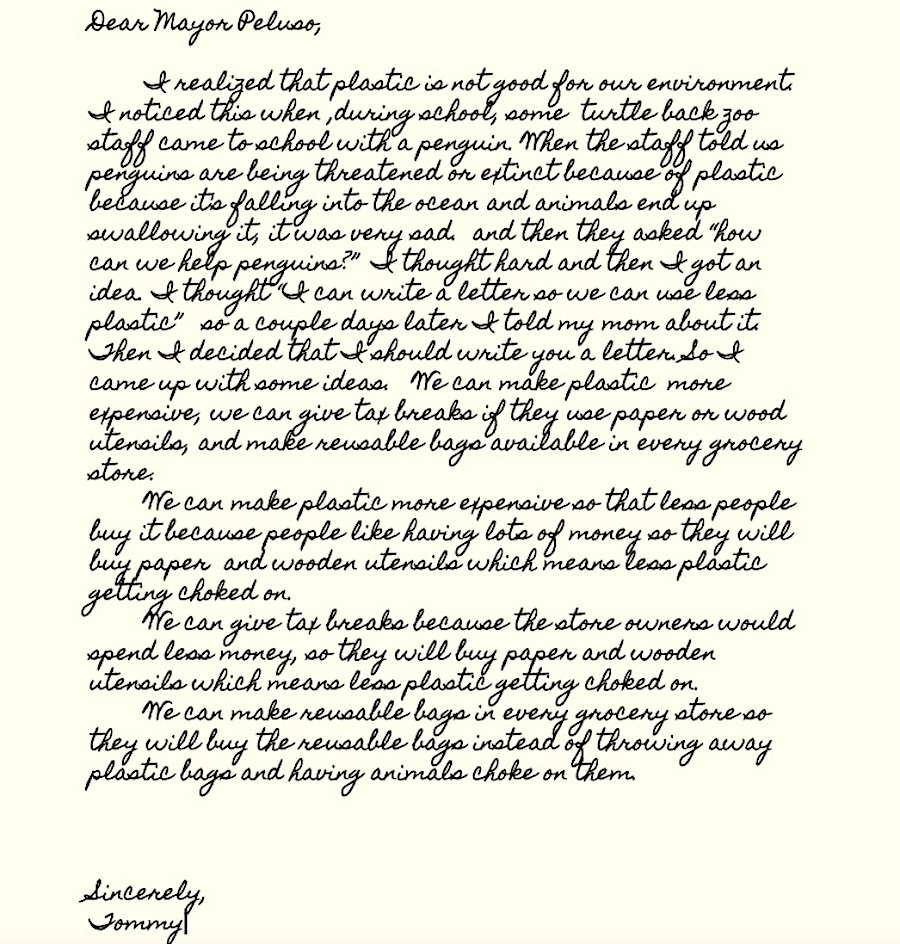Writing Conferences: A Minimalist Approach
By Patty McGee
 What is minimalism? “Minimalism is a tool to rid yourself of life’s excess in favor of focusing on what’s important—so you can find happiness, fulfillment, and freedom,” according to The Minimalists.
What is minimalism? “Minimalism is a tool to rid yourself of life’s excess in favor of focusing on what’s important—so you can find happiness, fulfillment, and freedom,” according to The Minimalists.
And while theirs is a lifestyle approach of decluttering, it works marvelously in the writing classroom as well. There is just so much stuff injected into writing instruction that is not allowing us, or our students, the happiness, fulfillment, and freedom available to us.
I’d like to offer you a minimalist approach to writing conferences. As a first step, though, we must face a fact:
Correcting writing does not teach.
I realize I am cutting to the chase rather bluntly at the onset of an article, but the biggest clutter-y teaching practice is fixing student writing.
It’s not our fault that correcting writing is ubiquitous and the go-to approach for most of us. Teaching writing is often overlooked in preservice coursework. Yes, there are exceptions, but the majority of us have defaulted to the only way we have learned how to respond to writing: to correct it. Namely, students write, we fix.
So, set correction aside and make space for highly engaging, motivating, and meaningful feedback.
Minimalist, and efficacious, writing conferences follow three simple steps.
- Pick a lens
- Name a strength
- Share a next step
Step 1: Pick a lens
One of the problems with corrective feedback is that it has us focusing on everything we can possibly say to fix the student’s piece. Let’s go minimalist and instead choose one single lens to focus our feedback. While there are many lenses you can choose from, here are three options:
- Structure: This focuses on how a piece is organized. This may be the overall organization of the piece, or particular chunks or paragraphs. If you choose structure, look at the piece only for structure.
- Elaboration: This lens focuses on how much detail is included in the piece. Look at chunks of text and notice the amount of detail included and perhaps where there may be too much detail. If you choose elaboration, look at the piece only for elaboration.
- Conventions: This is the polish on the writing, including punctuation, capitalization and spelling. If you choose conventions, look at the piece only for conventions.
Let’s use Tommy’s letter to the mayor as an example.
Just for practice, take the focus of elaboration and read over some or all of the piece. Ask yourself,
- What has Tommy done to elaborate?
- What could be a next step for Tommy?
When I ask myself these questions, I notice that Tommy has elaborated in that first paragraph using a mini-story about a visit from zoo staff. He also shared his thoughts and actions. I am also noticing that a next step for Tommy would be to elaborate on his later body paragraphs.
Perhaps you are noticing something different within the lens of elaboration. Whatever the case, choosing a singular focus streamlines feedback. I do believe the Minimalists would approve.
Step 2: Name a strength
This might be my favorite part of a simplified conference! The look on students’ faces when they hear a strength in their writing is pure gold. That said, it is also not just a feel-good experience. This is a keen teaching move. Why? Because when a student knows what they did well, they are more likely to use that strength again and again.
Some go-to wording that I love to use:
When you… it…
When you included your own personal story, it showed the reader how passionate you are.
In this part… the impact this had on your reader…
In this part you shared your thoughts and actions. The impact this had on your reader is they share the same emotions you were feeling.
Take a look back at Tommy’s piece and imagine what strength you would name. Perhaps use some of the phrases above. They help make the naming part strong and efficiently timed.
Step 3: Share a next step
In the final part of the minimalist conference, share a next step that the writer could take. This next step is likely one of many options for the writer. However, by choosing just one, we declutter our feedback. Some go-to phrasing might be: “Because… You are ready to…”
Tommy, because you included a personal story when you elaborated, you are ready to try adding examples. Let me show you…
Tommy, because you elaborated using thoughts and actions, you are ready to try explaining sentences in your body paragraphs. Here’s how…
Quick and meaningful
Truly, minimalist conferring is simple, decluttered, and time efficient. It creates the opportunity for full presence with a student in a concise amount of time.
And there you have it. A minimalist alternative to correction that is engaging, motivating, and meaningful. Give it a try and comment below. I would love to hear from you!

Patty’s favorite moments are in the classroom with both educators and students. A former classroom teacher, media specialist, and staff developer, she is the 2002 recipient of the prestigious Milken Award for Excellence in Education. Follow her @pmgmcgee and visit her website at www.pattymcgee.org.




































